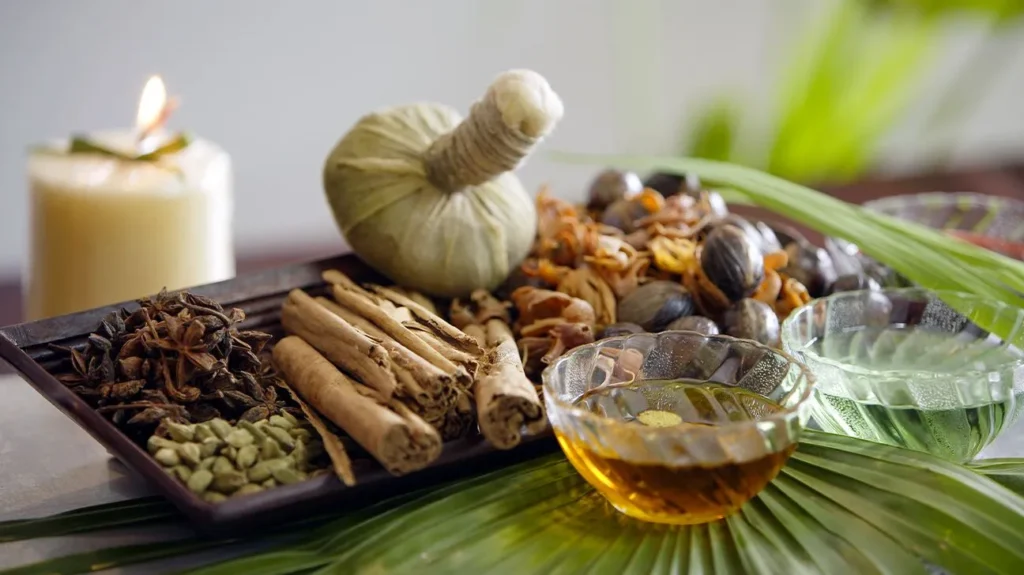
Everyone experiences pain at some point—whether it’s stiffness from sitting too long, joint discomfort from aging, or chronic aches from long-term conditions. Managing pain can be challenging, and many people prefer natural approaches over medications to avoid side effects. Ayurveda, the ancient Indian system of medicine, offers the best Ayurvedic pain treatments that target the root cause of discomfort and promote overall wellness.
In this guide, we’ll explore how Ayurvedic therapies for pain relief at home can help with chronic pain and support a pain-free life, all without leaving your house.
Why Ayurveda Works for Pain
Ayurveda emphasizes harmony between body, mind, and nature. Rather than merely masking discomfort, it focuses on treating the underlying causes of pain. Ayurvedic approaches strengthen the body, improve digestion, balance energy (doshas), and encourage relaxation.
These therapies are non-invasive, cost-effective, and suitable for all ages. Most require only natural ingredients, simple exercises, or mindful practices that you can easily include in daily routines. They are excellent examples of pain therapy without medicine.
Common Pain Issues and Ayurvedic Support
- Joint pain and arthritis: Imbalances in Vata dosha can cause stiffness and dryness in the joints. Warm herbal oils and anti-inflammatory herbs can help restore mobility.
- Back pain and muscle tension: Poor posture, stress, and strain can be eased with massage therapy, gentle stretching, and restorative breathing exercises.
- Chronic conditions: Ayurveda targets digestion, circulation, and nervous system health to reduce inflammation and promote tissue repair.
- Stress-related headaches and fatigue: Relaxation practices, oil therapies, and better sleep routines are essential for reducing discomfort.
Also, read this blog: Post Natal Massage at Home: Ayurvedic Healing for New Mother
Top Ayurvedic Therapies for Pain Relief at Home
1. Abhyanga (Self-Oil Massage)
Abhyanga is a traditional massage using warm oils like sesame, coconut, or medicated blends such as ashwagandha oil. It nourishes muscles, improves circulation, and calms the nervous system.
How to do it at home:
- Warm the oil slightly.
- Apply generously to sore areas (knees, shoulders, back).
- Massage gently in circular motions for 10–20 minutes.
- Rest for 45 minutes before taking a warm shower.
This is one of the most effective best Ayurvedic pain treatments that helps release tension, reduce inflammation, and improve blood flow.
2. Herbal Pastes (Lepa)
Herbal packs using turmeric, ginger, or neem help ease pain and swelling. Turmeric, in particular, has strong anti-inflammatory properties.
Preparation:
- Mix turmeric powder with a pinch of black pepper and warm water or sesame oil.
- Apply to the affected area for 45 minutes.
- Rinse with lukewarm water.
This method is particularly helpful for arthritis and joint inflammation and is an excellent example of pain therapy without medicine.
3. Gentle Yoga and Stretching
Certain yoga poses can improve flexibility, relieve muscle tension, and support joint health.
Recommended poses:
- Cat-Cow pose (spinal flexibility)
- Child’s pose (relaxing lower back)
- Pigeon pose (hip opening)
- Legs-up-the-wall pose (stress relief)
These exercises are key Ayurvedic therapies for pain relief at home, helping strengthen muscles and improve mobility naturally.
4. Breathing Exercises (Pranayama)
Stress and anxiety can worsen chronic pain. Deep breathing calms the nervous system, relaxes muscles, and helps regulate blood pressure.
Simple technique:
- Sit comfortably and close your eyes.
- Inhale through the nose for 4 seconds.
- Hold your breath for 4 seconds.
- Exhale slowly through the mouth for 6 seconds.
- Repeat 10 times daily.
5. Warm Compresses
A warm compress helps relax muscles and improve circulation.
How to use:
- Soak a towel in hot water and wring it out.
- Place on the painful area for 15–20 minutes.
- Repeat as needed.
You can also mix herbal powders with warm water for enhanced benefits.
6. Dietary Adjustments
Ayurveda considers diet a key factor in pain management. Anti-inflammatory foods support healing and reduce discomfort.
Include:
- Fresh fruits and vegetables
- Whole grains like quinoa and brown rice
- Spices such as turmeric, ginger, and cumin
- Healthy fats like ghee and olive oil
Avoid: processed foods, refined sugars, and excessively cold foods that may aggravate Vata.
Key Tips for Effective Results
- Consistency matters: Regular practice is more effective than occasional use.
- Personalise your approach: Consult an Ayurvedic expert for tailored therapies.
- Combine methods: Massage, yoga, and diet adjustments together create a holistic effect.
- Stay hydrated: Warm water or herbal teas aid digestion and detoxification.
- Listen to your body: Adjust or stop therapies if they cause discomfort.
When to Seek Medical Help
Ayurvedic therapies complement conventional treatment but are not a substitute. Seek medical advice if pain is severe, persistent, or accompanied by unusual symptoms.
Final Thoughts
Pain doesn’t have to control your life. Using simple Ayurvedic pain treatments at home, you can experience natural relief, restore balance, and support overall well-being.
At Ayursh, we provide expert-guided, home-friendly therapies to help you manage pain safely and effectively. Start your journey with these natural remedies today and embrace a more comfortable, pain-free life.
Read more: Post-Pandemic Stress Relief: Gentle Panchakarma At Home in Mumbai Apartments

